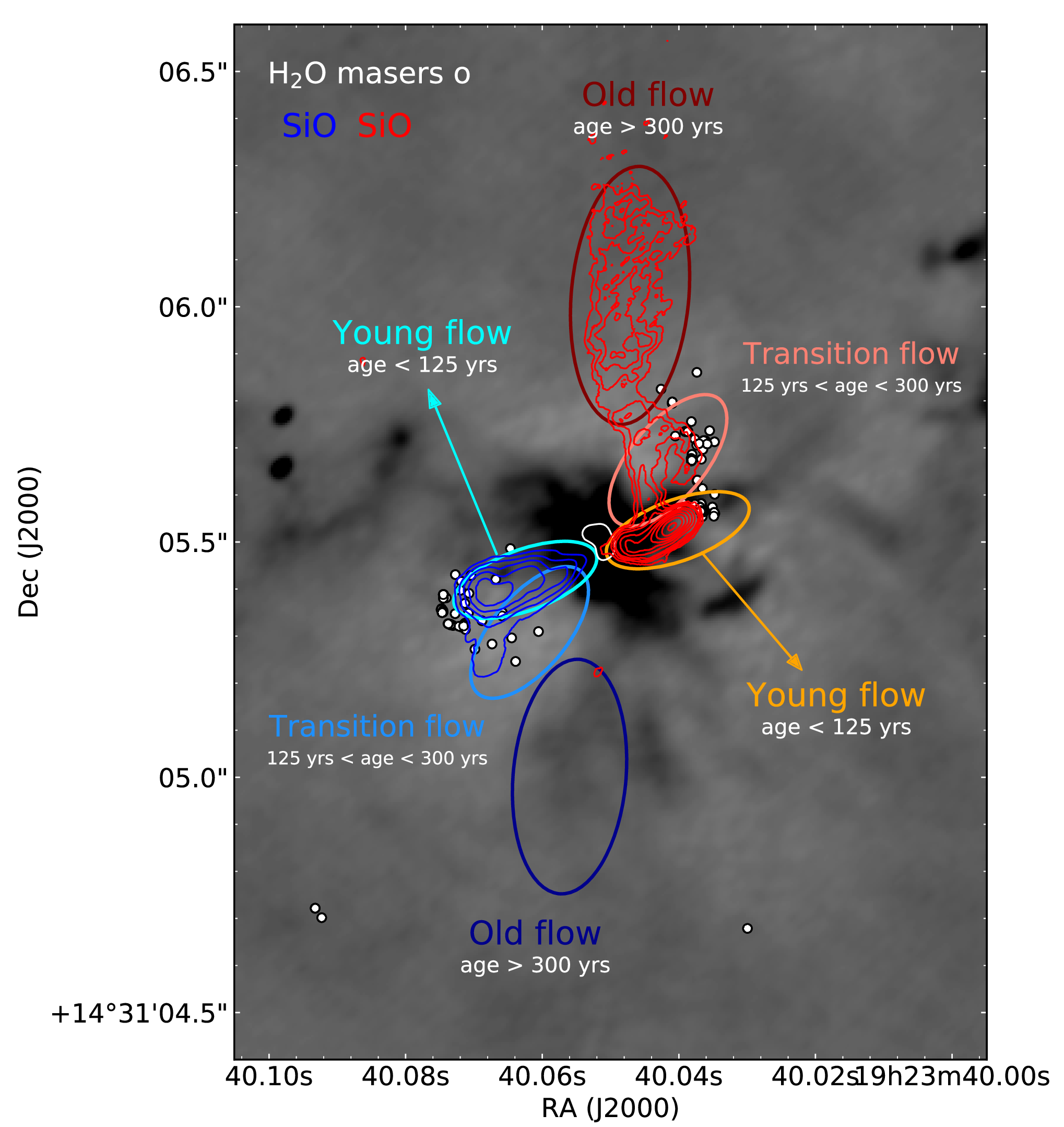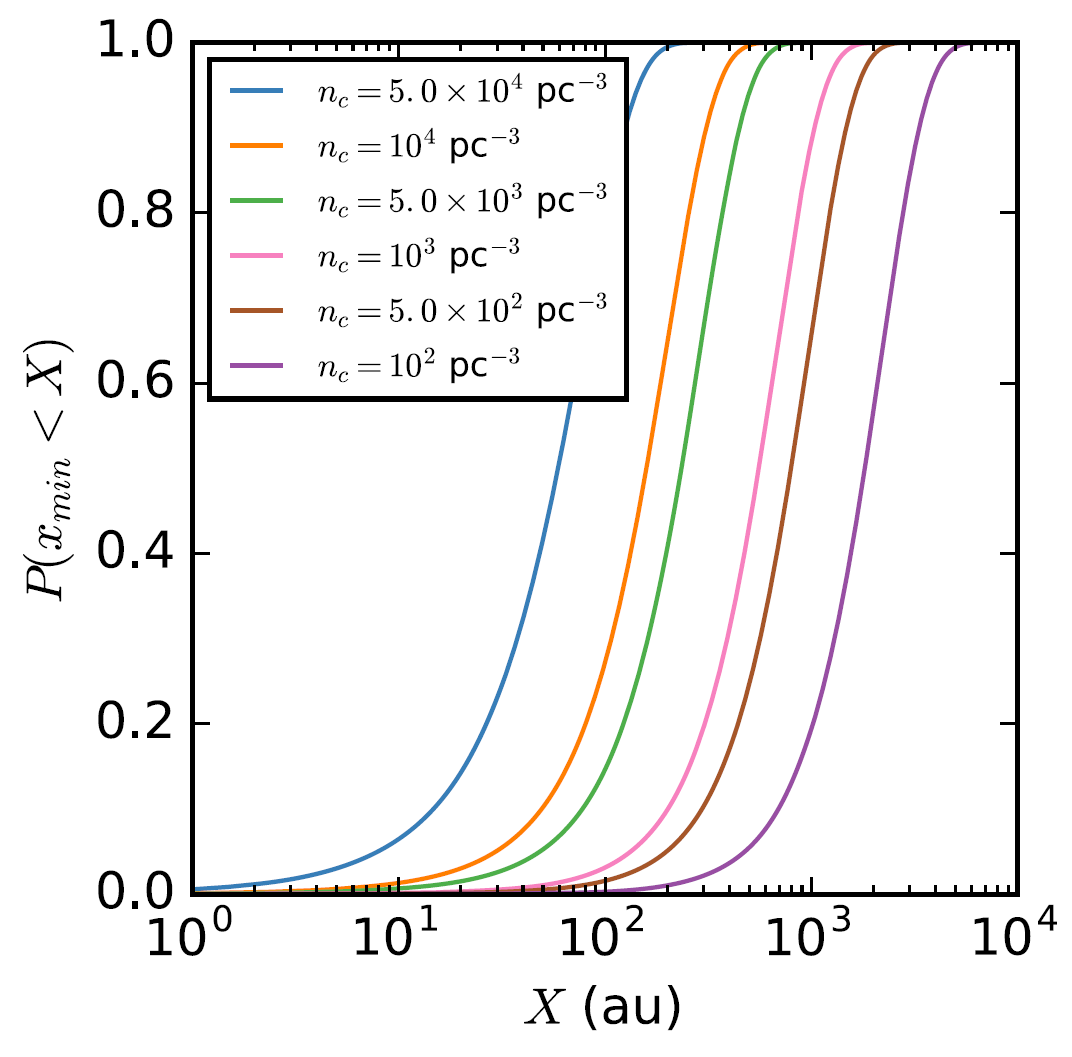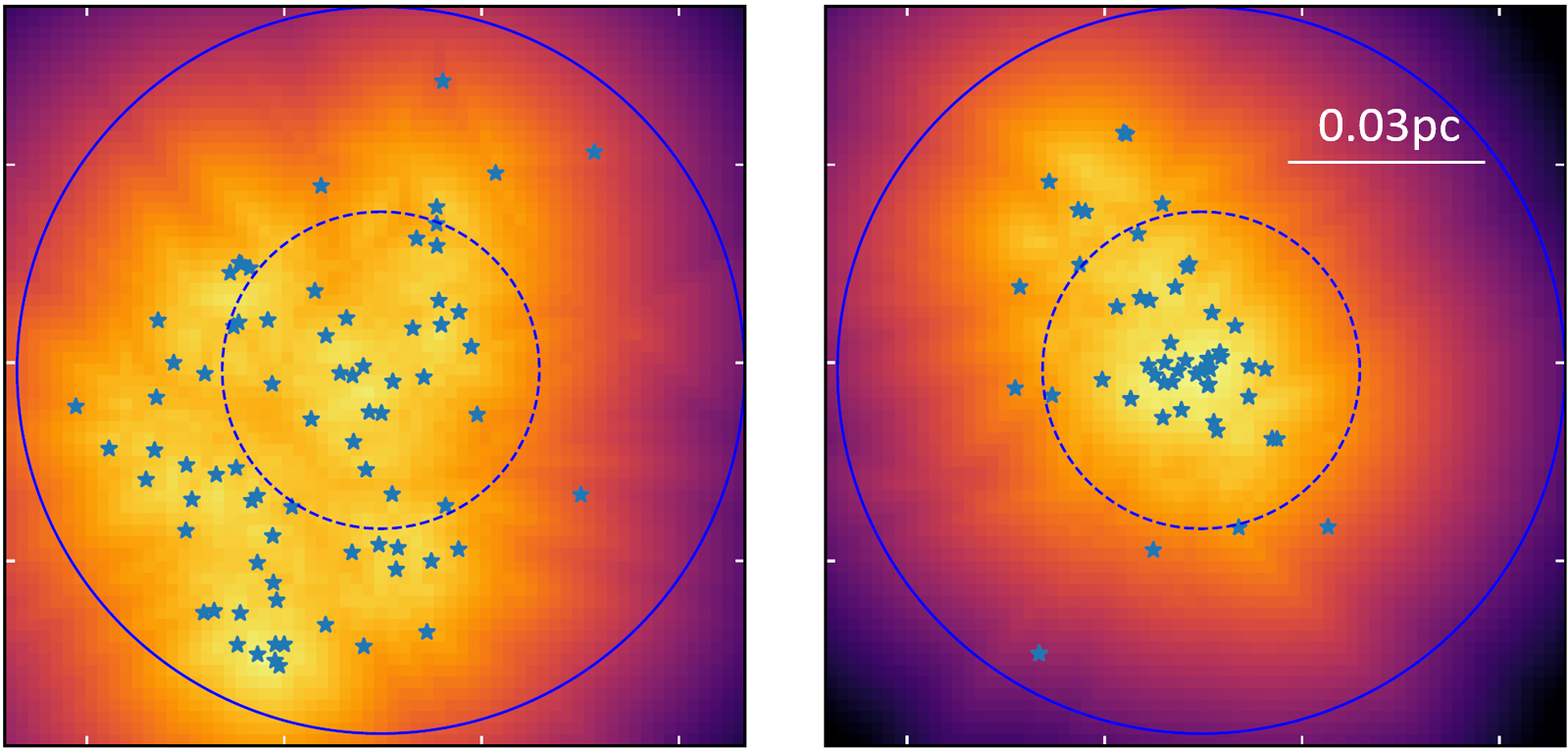Clouds To Discs 2021
How do high-mass stars get their mass?
Brinary stars as a probe
Adam Ginsburg
Assistant Professor
Department of Astronomy
University of Florida, Gainesville
- Postdoc: Allison Towner
- PhD: Desmond Jeff, Theo Richardson, Alyssa Bulatek, Nazar Budaiev
- REU: Justin Otter, Danielle Bovie, Josh Machado, Sydney Petz
- Undergrad: Madeline Hall, Michael Fero, Derod Deal, Parker Ormonde, Aden Dawson, Helen Radomski, Brice Tingle, Oketa Basha, Morgan Himes
Slides available at https://keflavich.github.io/talks/CloudsToDiscs2021.html
How does accretion end?
A star accretes gas from its surroundings.
Its final mass is set when this process stops.
What stops mass buildup?
- Gas runs out (exhaustion)
- Star is ejected from its reservoir (core)
- Gas is blown out (evacuation, feedback)
- Another steals it (theft, fragmentation-induced starvation)
The role of disks
HMYSOs have disks.
How & when does mass get from disk to star?
- Mostly during the "stage 0" phase (Bourke talk)
- Largely through bursts?
Accretion bursts are an important mode to move gas from disk to star. - They are driven by:
- Asymmetric (non-axisymmetric) accretion flows
- Dynamical interactions
- Disk instabilities? (Elbakyan poster)
- Smooth accretion? (Oudmaijer talk)
W51 e2e & north: non-axisymmetric accretion flows
Ongoing mass accretion, Menv > M*
Outflows imply disks, but no rotation is seen.
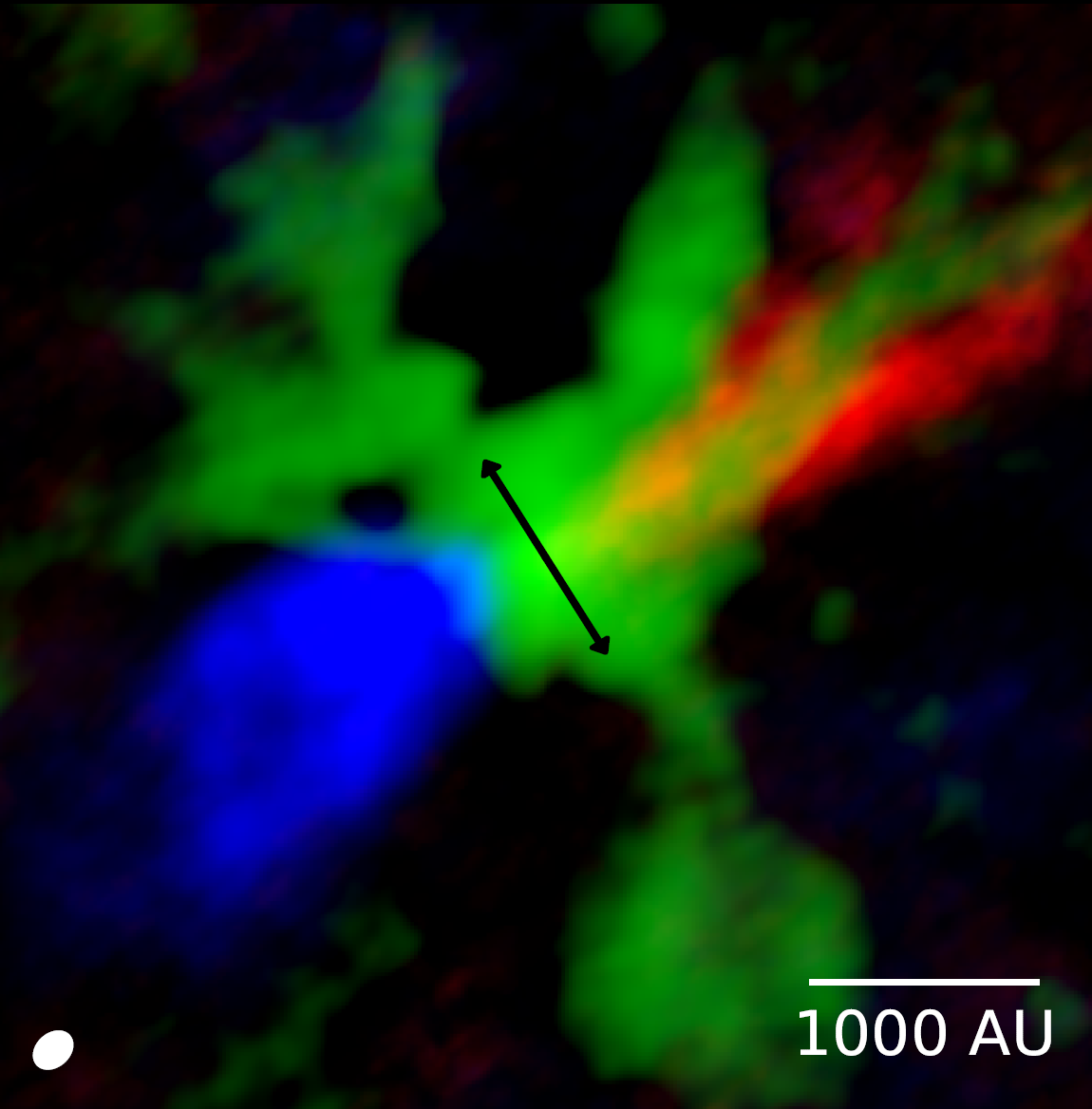
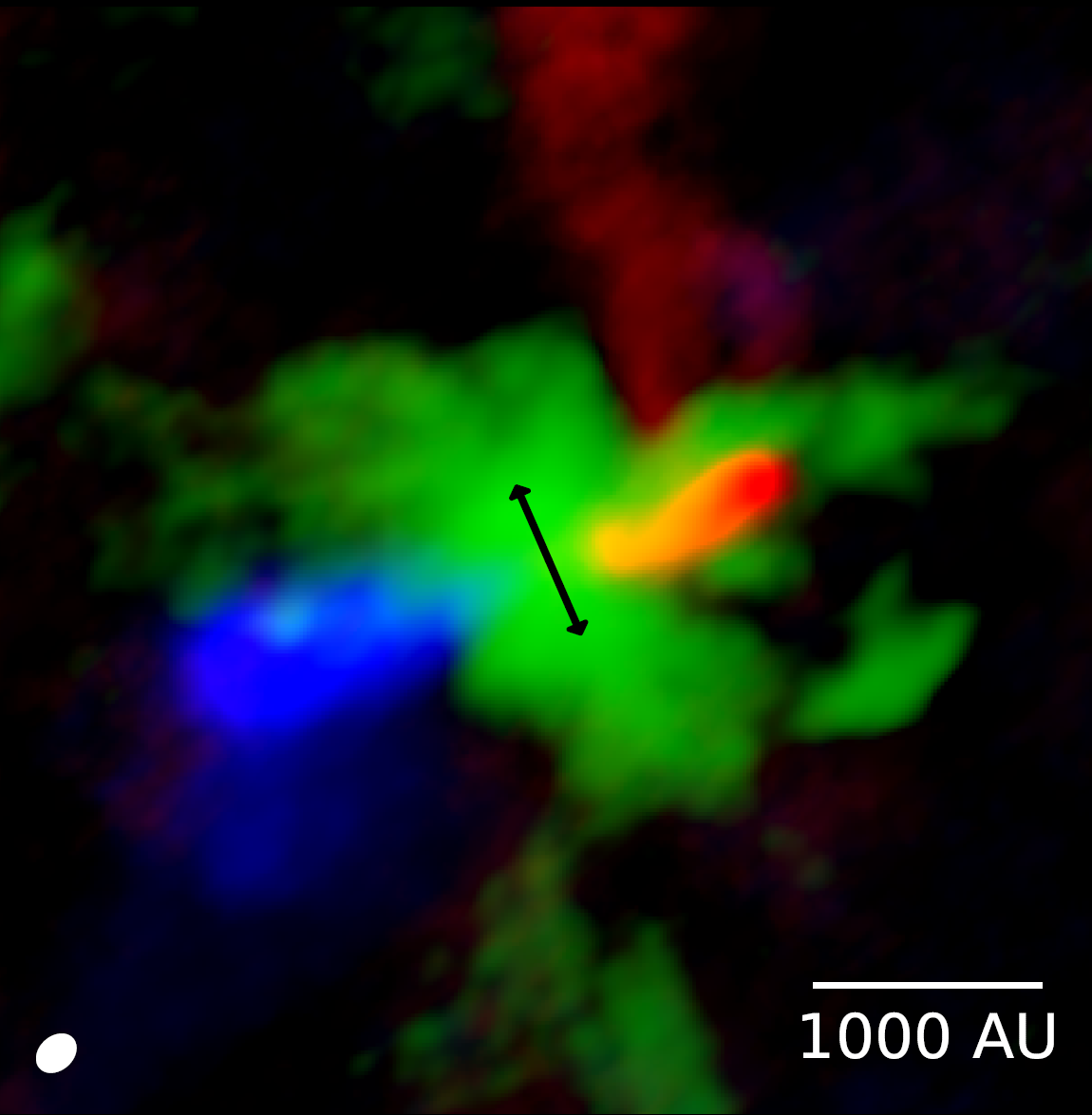
CS v=0 J=1-0 and v=0 J=2-1 masers trace the disk?
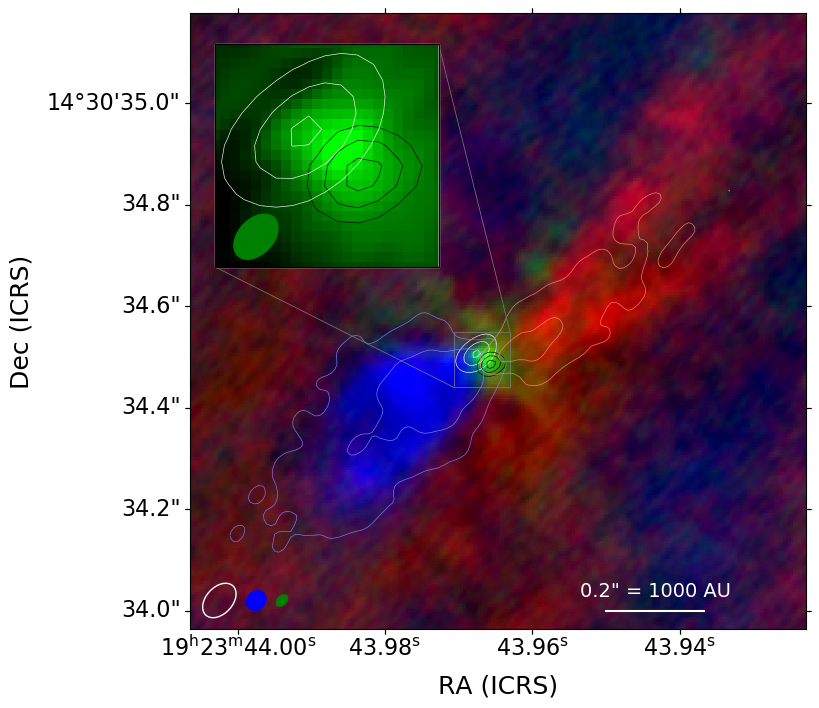
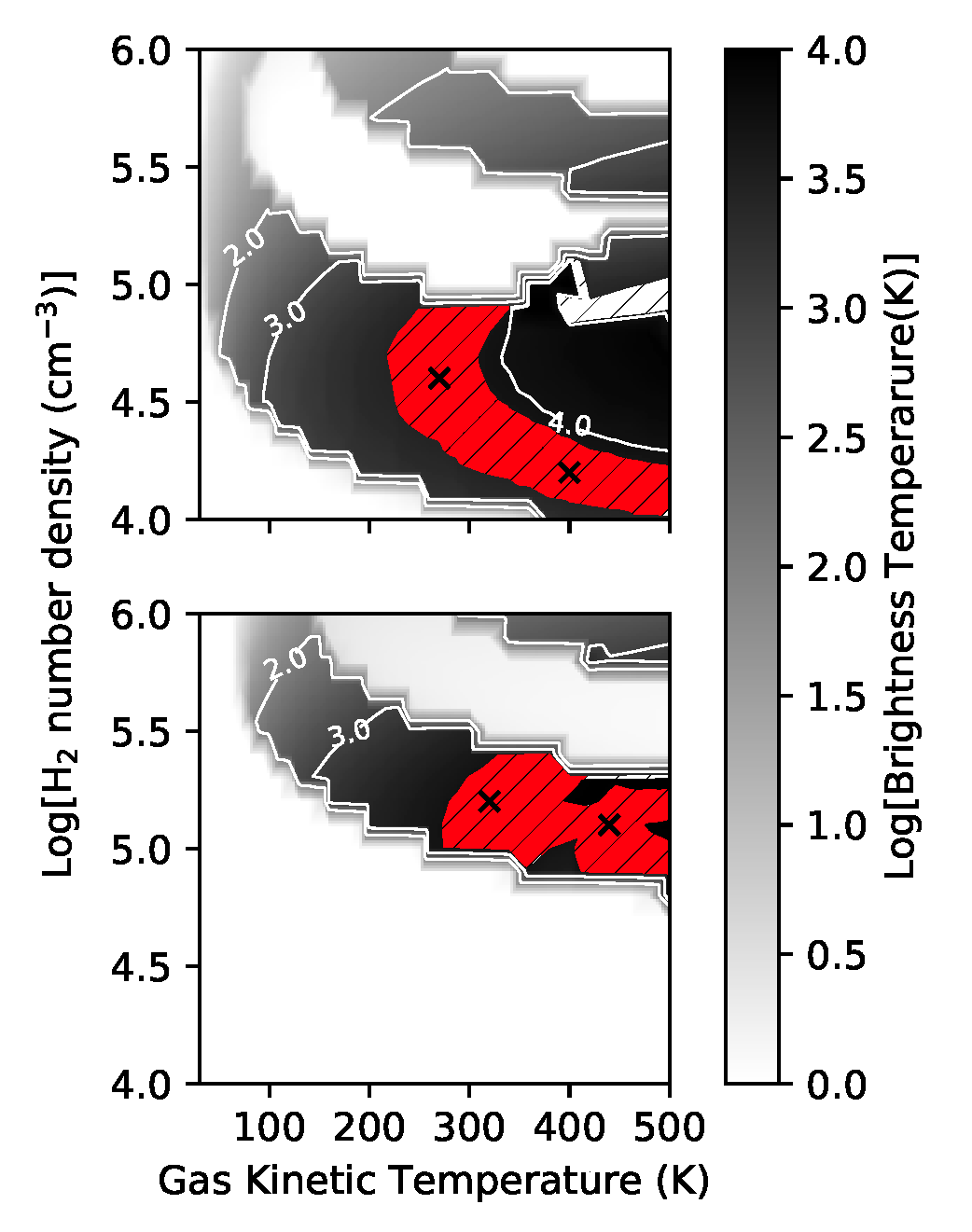
CS maser conditions
van der Walt+ 2020- Top: CS J=1-0, Bottom: CS J=2-1
- Red: Consistent w/W51e2e observations
- Masers do not coexist; require different specific CS column
(N2-1=1015.6, N1-01016.1 cm-2) - Require high abundance (XCS > 10-5)
- Hot (300-500 K), moderate-density (n~105 cm-3): Disk surface? Or outflow cavity wall?
non-Axisymmetric Accretion
The outflow (& disk) around W51 North changed direction by ~50 deg
in < 100 years.
0.25-0.5 M⊙ accreted in ~100 years.
Zooming in: W51-IRS2
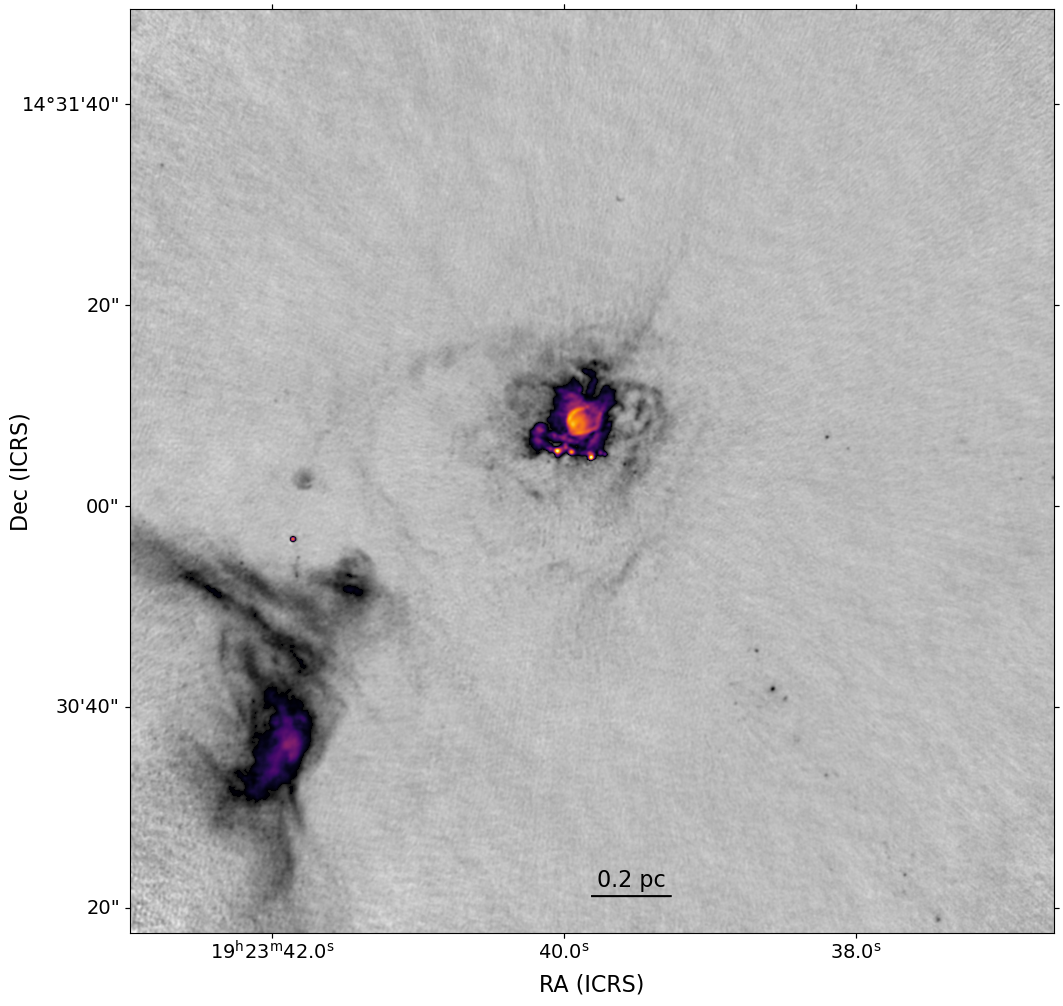
Zooming in: W51-IRS2
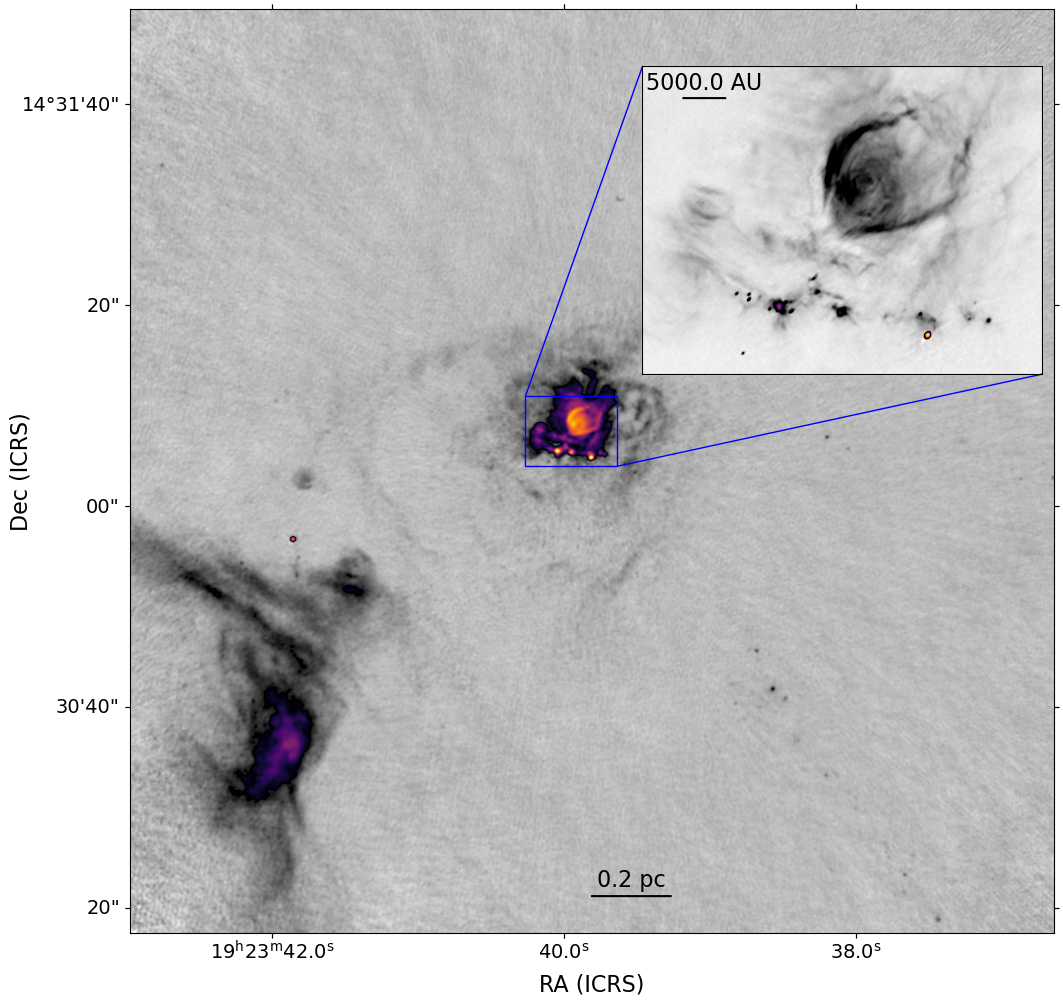
Zooming in: W51-IRS2
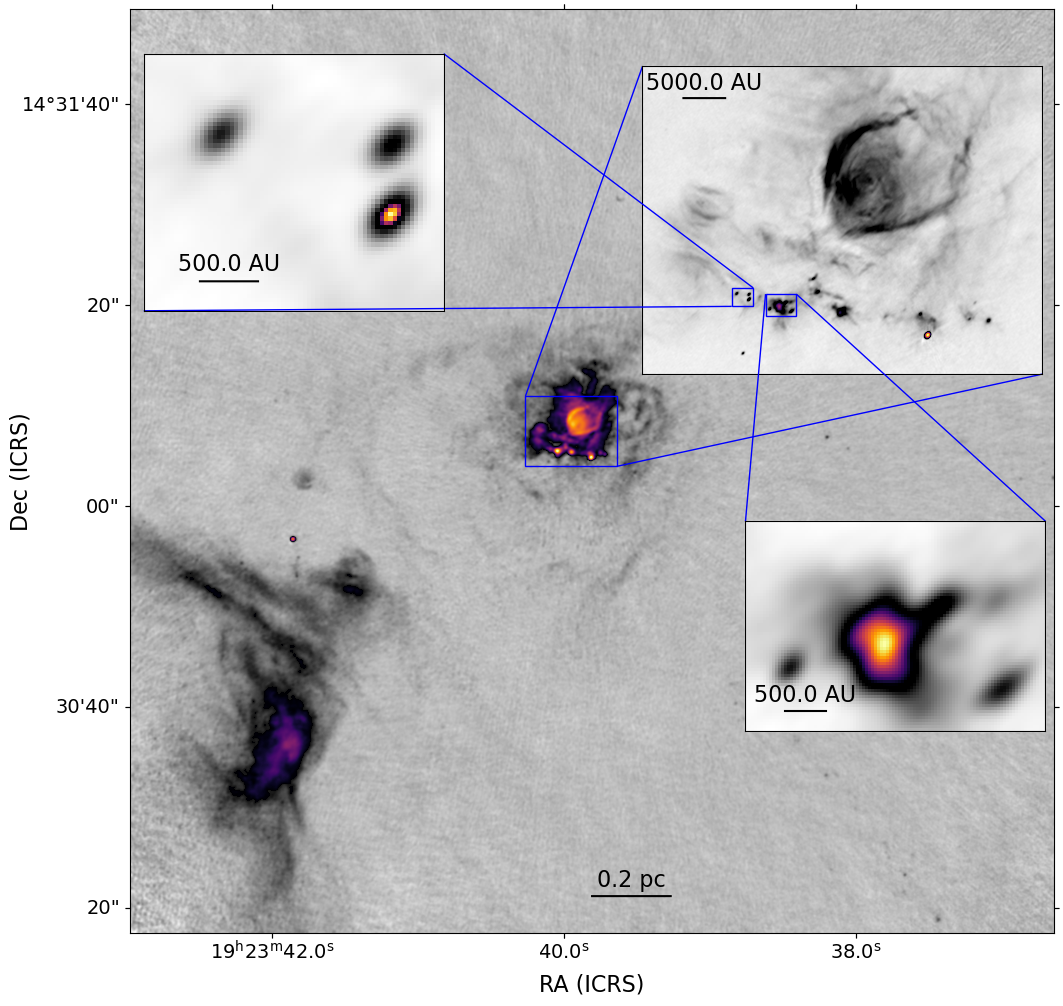
At high stellar densities,
close encounters are frequent
How dense are cluster-forming regions?

OMC1 is denser than the ONC

N*OMC(Otter+ 2021) = 1.6 x 105 pc-3
N*ONC(Otter+ 2021) = 0.6 x 105 pc-3
N*ONC(Hillenbrand+ 1998) = 0.2 x 105 pc-3
Many new disks in the OMC
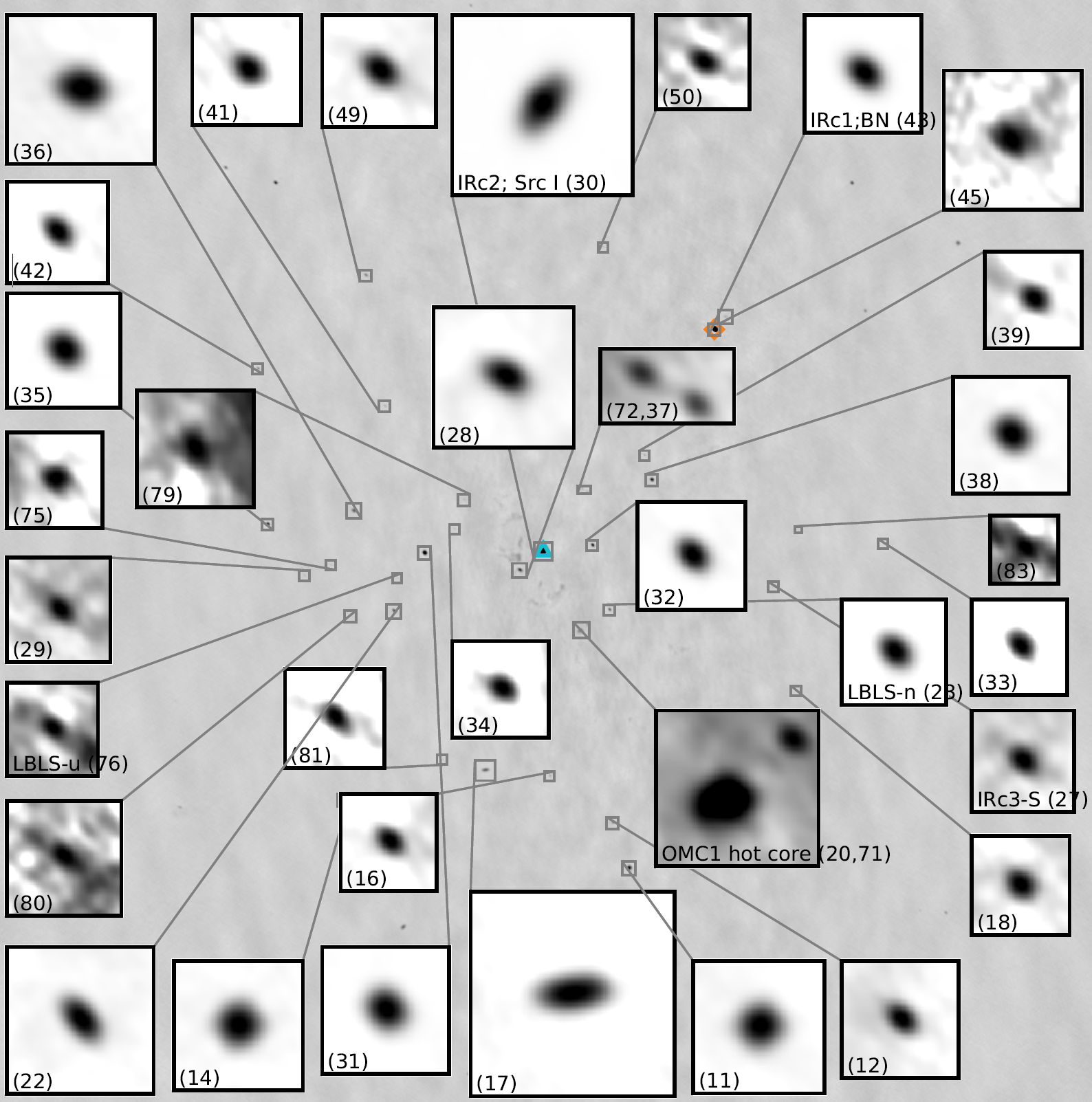
 Otter+, resubmitted
Otter+, resubmitted
FOV: 0.07 pc (16000 AU)
72 YSOs
One "hot core"
Disk Gallery
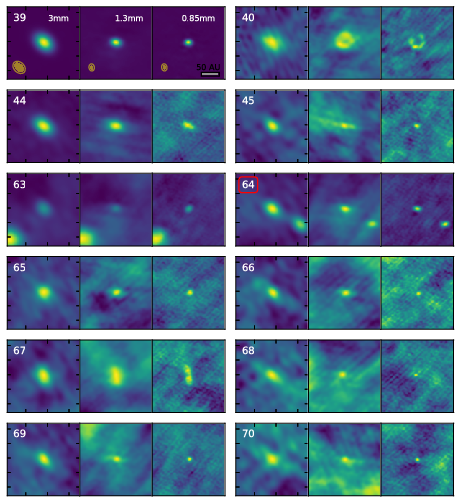
Dynamical ends to accretion
The BN/I/x interaction is the poster case of accretion ended by dynamical interaction. Orion Source I
a disk around a 15 M⊙ YSO
Material with vesc < vejected was lost.
vejected = 11.5 km/s = vesc(200 AU)
Disk is oriented along the direction of motion: probably re-oriented in ejection
vejected = 11.5 km/s = vesc(200 AU)
Disk is oriented along the direction of motion: probably re-oriented in ejection
Mdisk ~ 0.02 - 2 M⊙ << M*
(Plambeck+ 2016)
SrcI is leaving the hot core
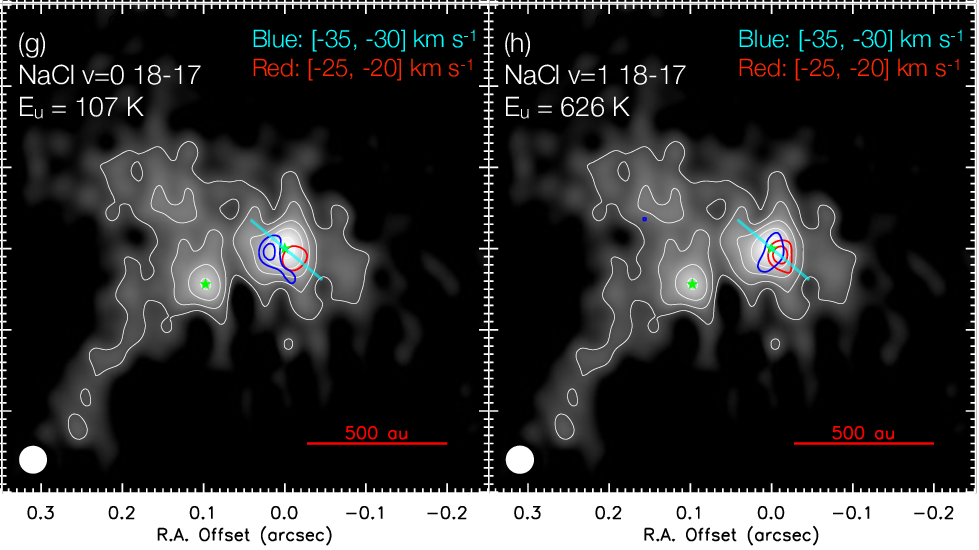

Left: Tanaka+ 2020, pair of NaCl-bearing disks.
Right: G17, Maud+ 2020
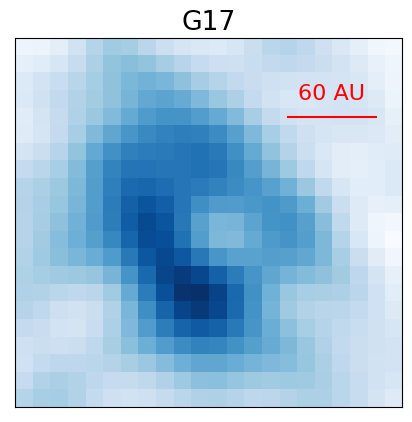
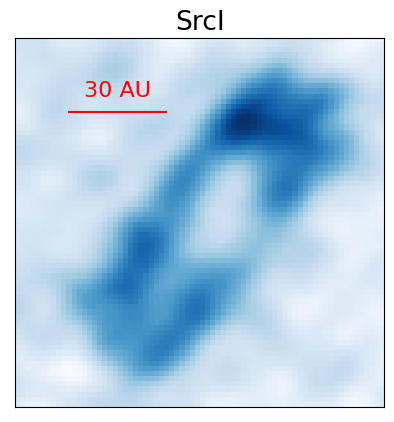
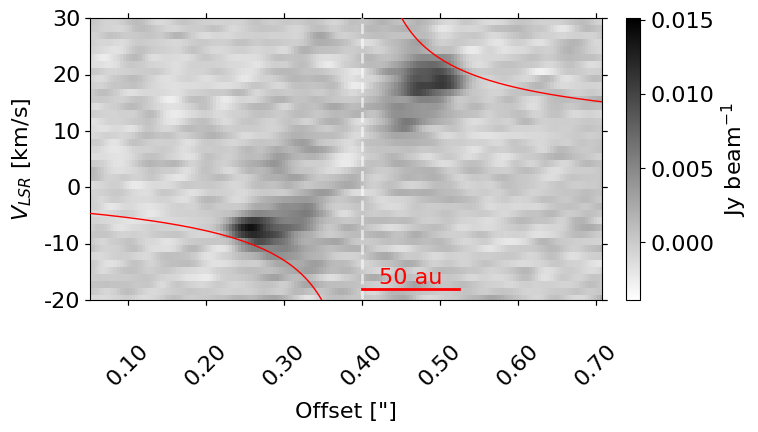
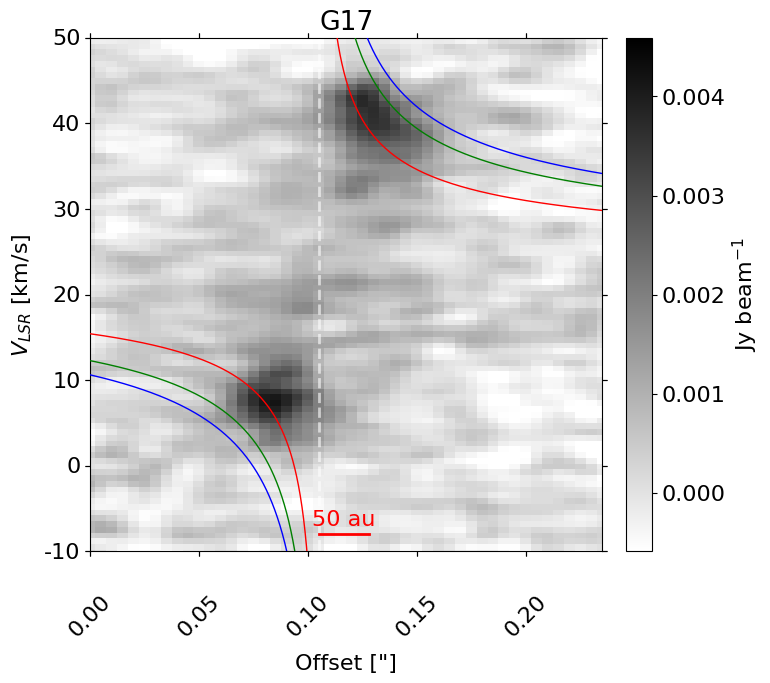
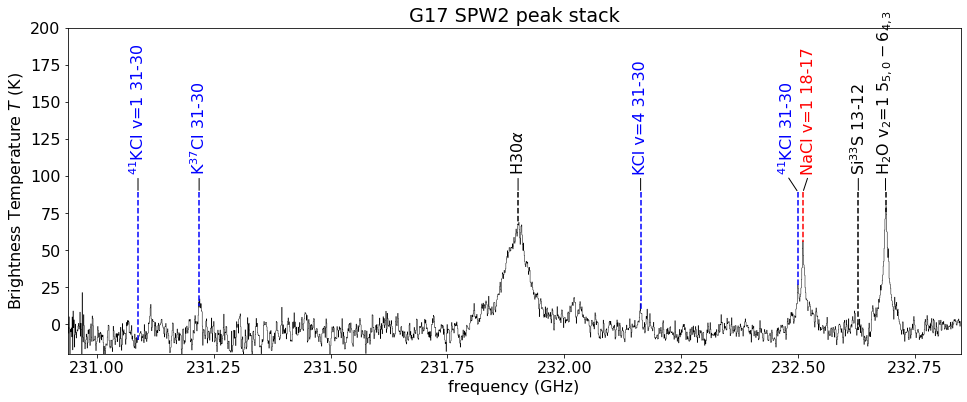 Hot (ionizing) photosphere. Circular disk.
Hot (ionizing) photosphere. Circular disk.
 Molecule rich, kinematically messy & extended
Molecule rich, kinematically messy & extended
Right: G17, Maud+ 2020
Temperature?
Temperature?
A contrived model
Observing the Keplerian rotation profile of a disk is the most direct way to measure a protostar's mass
(we can only see the disk, not the star itself)
How can we measure masses of HMYSOs?
Brinary disks
The SrcI disk has gas-phase salt (NaCl, KCl) and water (H2O).
So it's brine.
(blame Adam Leroy for this term)


IRAS16547A/B (Tanaka+ 2020)
have (unresolved) salt water disks
Brine lines measure dynamical mass
NaCl v=1 J=18-17
Stack of v=[0,1] Ju=18,17


15 M⊙
30 M⊙
40 M⊙
What have we learned about brinaries?
- Somewhat rare?: 4 known so far, ~10 examined
- Y: SrcI, G17, IRAS16547, NGC6334I?
- Ginsburg+ 2019, Maud+ in prep, Tanaka+ 2020
- N: I16523, I18089, G11, G5, W33, NGC6334IN
- Sanhueza, Olguin, Ginsburg+ in prep
- Y: SrcI, G17, IRAS16547, NGC6334I?
- Coincide w/line-poor sources
- Not hot cores; little mass reservoir?
- Trace reasonably symmetric disks (in the two well-resolved cases)
Compare: G17 vs W33
 Hot (ionizing) photosphere. Circular disk.
Hot (ionizing) photosphere. Circular disk.
 Molecule rich, kinematically messy & extended
Molecule rich, kinematically messy & extended
Summary
- Ejection and dynamical interaction are important in HMSF.
Bold, moderately supported claim: More important than disk-mediated accretion
- Ejection ends accretion [SrcI]
- Dynamical interaction, non-axisymmetry triggers bursts
- Brinary disks exist around HMYSOs
- Brine lines are good for kinematic mass measurements
(NaCl, KCl have low-frequency transitions accessible to ngVLA)
- They may show up at the end of accretion
- Still too few to draw firm conclusions
- More to be found!
- Brine lines are good for kinematic mass measurements
